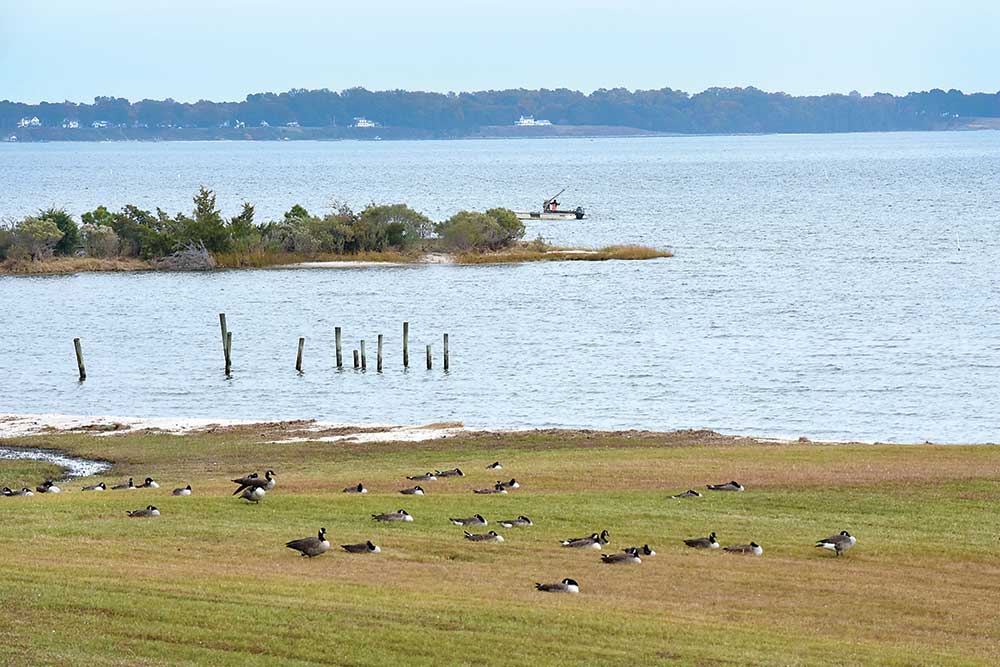
This is the last in a special two-part series on the Beverly Beach community.
by Larry Chowning –
Beverly Beach subdivision in Topping at the mouth of Locklies Creek is a reminder of Middlesex County’s long history of racism and sectionalism. The subdivision was created in 1946 in the aftermath of World War II when Germans John and Irene Korbach decided they wanted to sell their 66-acre waterfront farm.
As Germans, the family had faced criticism and harassment from the community for their ancestral and family association with Germany, the country Americans had fought against in World War II.
The Korbachs made a statement to the neighborhood when they sold their property to Blacks, Dr. M.E. Toney Sr. of Middlesex and Dr. George W. White of Norfolk, who together purchased and founded Beverly Beach subdivision, originally an all-Black subdivision.
During those times of segregation between Blacks and whites, the Korbachs’ sale of prime waterfront property to two Black doctors was an in-your-face message to the white community.
The segregated subdivision provided an opportunity for successful Blacks and family members of the Toneys and Whites to own a summer-time cottage on the river. This was in a time when owning a summer cottage was associated with the rising white middle class after World War II, wealthy enough to own a home in the city and a summer cottage on the river — no heat, no air conditioning. These cinderblock summer cottages were the precursor to the fine waterfront homes that came with the waterfront housing boom of the 1970s, 80s and today.
Wayne Toney, who lives in the subdivision, is the grandson of Dr. M.E. Toney Sr. who purchased the property. Wayne’s father Dr. M.E. Toney Jr. managed the property for many years. Wayne recalls that the summer-time visits from his home in Richmond during the 1960s and 70s were fun but that changed in the coming decades.
Changing times – 1980s, 90s
“Things started to change in the 1980s,” said Wayne. “The shared responsibility agreements of my grandfather and Dr. White for the maintenance of grass, roads, piers and upgrades was coming unglued.
After the death of Dr. Toney Sr. in 1966 his wife Ora V. Toney and Wayne’s father shared responsibility “but most of it fell to my father and Julia Mae Williams who was Dr. White’s niece and his only heir to continue the arrangement.
“My father got tired of paying for everything and the increasing liability related to the subdivision,” said Wayne. “With members of the Beverly Beach (original) families dying off, and non-family members starting to buy property, my father decided in 1981 to give land that included the roads, a waterfront park, a pier and boat ramp to the property owners who were mostly family and members of the Beverly Beach Association. The transaction was completed in 1985, but sadly there are currently few who remember or are aware of that,” said Wayne.
“Through the 1990s, the roads were still dirt and there was still somewhat of a family atmosphere,” he said. “Around 2000 the roads got paved and the first white families started buying the waterfront property. Wealthy Blacks from New Kent started buying the inland property without knowing the history of what Beverly Beach or the Beverly Beach Association is all about.”
Wayne lives in the family homeplace at Beverly Beach subdivision that his mother Louise Beverly Christian Toney built. She tore down the original cottage built by Dr. Toney Sr. and built a new house on the same spot overlooking the Rappahannock River and Chesapeake Bay.
Wayne has the distinction of being the first African-American to graduate from Christchurch School. He is a James Madison University graduate and had a successful career in the auto repair business in Richmond and New Jersey. He built his own race car and was active in the Mid-Atlantic drag racing circuit for almost 20 years. He is still racing today whenever he can.
He laments over the bygone days when Beverly Beach subdivision was occupied by mostly his and Dr. White’s families. “I think some (who live here today) have forgotten that this community was made and encouraged by my family,” he said.
The one thing that hasn’t changed is the abundance of (Canada) geese. “A lot of people down here consider the geese a nuisance and discourage them from being here. What they don’t know is that the geese don’t like them either and they know when to come back when they go back home to the city.”
On a warm day in November, Wayne pointed down towards the river bank where several hundred geese were basking in the sun on the shoreline at Beverly Beach. “They (geese) don’t bother me,” said Wayne. “They are a reminder to me of how life used to be here when all my family was here with me (at Beverly Beach)!”
Wayne continued, “During the pandemic there were three geese that used to come up on my sidewalk and stand in front of my front door,” said Wayne. “They would make a lot of noise and I’d come out and tell them to shut up.
“They kept coming back and I realized that these three geese must have been coming by to make sure I was still alive,” he said. “They touched my heart. They came to check on me when people I know don’t bother to call. These geese are my family and even though they make a lot of noise and wake me up from my nap, they are welcome on my part of Beverly Beach.”



